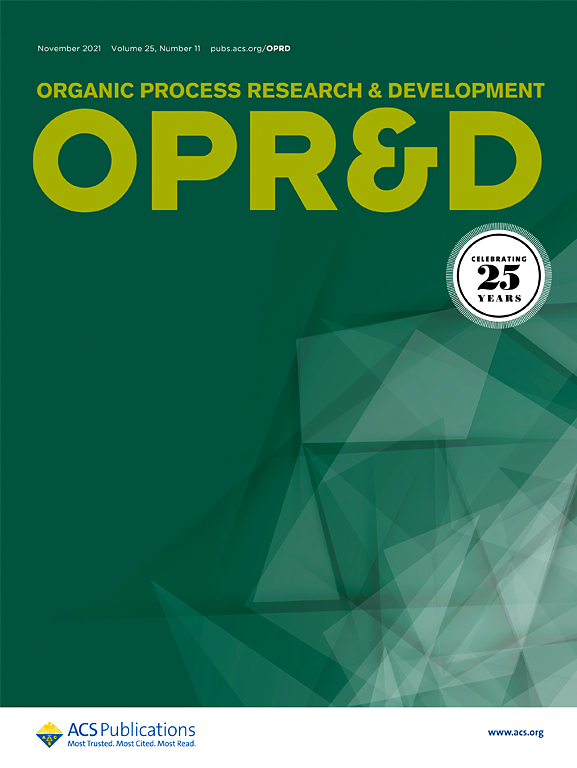TAM和MET受体激酶抑制剂核心(R)-2-((4-(4-氨基-2-氟苯氧基)-1-(4-甲氧基)- 1h -吡唑[3,4-b]吡啶-3-基)氨基)丙烷-1-醇的一种便捷合成方法
IF 3.5
3区 化学
Q2 CHEMISTRY, APPLIED
引用次数: 0
摘要
提出了一种针对TAM和MET激酶的激酶抑制剂核心(R)-2-((4-(4-氨基-2-氟苯氧基)-1-(4-甲氧基)- 1h -吡唑[3,4-b]吡啶-3-基)氨基)丙烯-1-醇的可扩展合成途径。在铜催化的C-N偶联反应的基础上,形成了选择性亲核芳香取代反应(SNAr)。与文献中先前报道的六步序列相比,该路线包含更少的步骤(四个步骤),从而显着提高了总体收率。本文章由计算机程序翻译,如有差异,请以英文原文为准。
![An Expedient Approach for the Synthesis of TAM and MET Receptor Kinase Inhibitor’s Core (R)-2-((4-(4-Amino-2-fluorophenoxy)-1-(4-methoxybenzyl)-1H-pyrazolo[3,4-b]pyridin-3-yl)amino)propan-1-ol](https://img.booksci.cn/booksciimg/2025-8/103308365421786435502.jpg)
An Expedient Approach for the Synthesis of TAM and MET Receptor Kinase Inhibitor’s Core (R)-2-((4-(4-Amino-2-fluorophenoxy)-1-(4-methoxybenzyl)-1H-pyrazolo[3,4-b]pyridin-3-yl)amino)propan-1-ol
A scalable synthetic route to the kinase inhibitor's core (R)-2-((4-(4-amino-2-fluorophenoxy)-1-(4-methoxybenzyl)-1H-pyrazolo[3,4-b]pyridin-3-yl)amino)propan-1-ol targeting TAM and MET kinases is presented. A selective nucleophilic aromatic substitution (SNAr) reaction was developed as the key transformation along with a Cu-catalyzed C–N coupling reaction. This route comprises fewer steps (four steps) compared to the six-step sequence previously reported in the literature, delivering significantly improved overall yield.
求助全文
通过发布文献求助,成功后即可免费获取论文全文。
去求助
来源期刊
CiteScore
6.90
自引率
14.70%
发文量
251
审稿时长
2 months
期刊介绍:
The journal Organic Process Research & Development serves as a communication tool between industrial chemists and chemists working in universities and research institutes. As such, it reports original work from the broad field of industrial process chemistry but also presents academic results that are relevant, or potentially relevant, to industrial applications. Process chemistry is the science that enables the safe, environmentally benign and ultimately economical manufacturing of organic compounds that are required in larger amounts to help address the needs of society. Consequently, the Journal encompasses every aspect of organic chemistry, including all aspects of catalysis, synthetic methodology development and synthetic strategy exploration, but also includes aspects from analytical and solid-state chemistry and chemical engineering, such as work-up tools,process safety, or flow-chemistry. The goal of development and optimization of chemical reactions and processes is their transfer to a larger scale; original work describing such studies and the actual implementation on scale is highly relevant to the journal. However, studies on new developments from either industry, research institutes or academia that have not yet been demonstrated on scale, but where an industrial utility can be expected and where the study has addressed important prerequisites for a scale-up and has given confidence into the reliability and practicality of the chemistry, also serve the mission of OPR&D as a communication tool between the different contributors to the field.

 求助内容:
求助内容: 应助结果提醒方式:
应助结果提醒方式:


